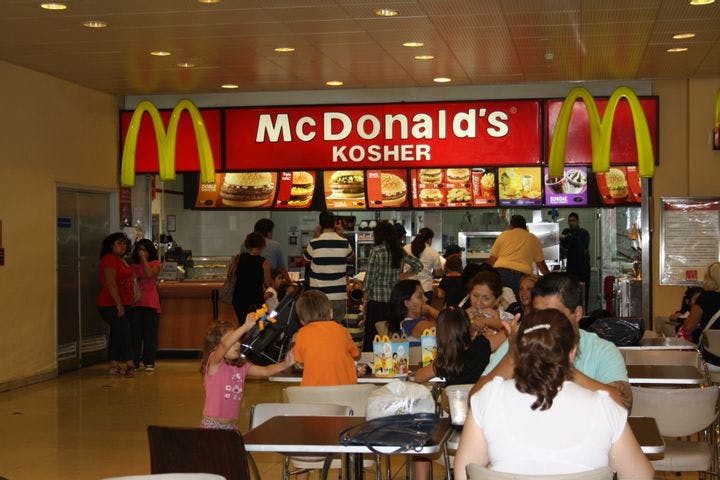Fall 2012
The Kosher Renaissance
– The Wilson Quarterly
On eating kosher in the modern world.
No food from animals that have cloven hooves or chew their cud. No seafood that lacks scales or fins. Nothing made from meat that has been prepared, served, or stored with dairy products (and vice versa). These are just a few of the many rules of kashrut, the dietary code stated in the Torah, the holy Jewish text. About 1.5 million American Jews, mostly followers of Orthodox Judaism and other relatively traditional expressions of the Jewish faith, “keep kosher,” as the practice of adhering to the code is known. But “how exactly does an ancient code of dietary ritual get applied to the Nabisco factory in East Hanover, New Jersey?” asks writer Jeffrey Yoskowitz.
A little more than a century ago, few Jews fretted about whether the outside world kept kosher. Jewish people prepared food themselves or purchased it at local shops in their tightly knit communities. But as white bread, eggs cradled in stiff paper, and other industrial food products appeared, the question became more salient. How were kosher-keeping Jews to know whether ham, a prohibited food, was used in a can of soup, or if mass-produced marshmallows contained gelatin from pigs’ hooves? Not until 1966 did the U.S. Food and Drug Administration require food labels to contain ingredients.
A few enterprising rabbis stepped in to fill the void. For a fee, they inspected the facilities of food manufacturers, suggested kosher-friendly substitutions, and, when practices met with their satisfaction, allowed their clients to advertise their approval. But some rabbis charged outrageous amounts, while others never set foot in the factories they claimed to have inspected.
In 1918, the Orthodox Union (OU), a local synagogue organizing body in Brooklyn, responded by creating national standards for kosher certification and starting an inspection service with uniform standards. By stressing the size of the American Jewish market, it convinced Coca-Cola, Heinz, and other American food manufacturers to produce their goods in accordance with kashrut. Today, many American food products bear the OU’s stamp of approval—a small encircled U—or that of another credible kosher certifying group.
The OU acted in part because it was worried about the future of Jewish solidarity as more Jews settled in suburban communities with a diversity of faiths. A large-scale kosher certification program allowed Jews to keep kosher more easily and generated revenue for Jewish publications and youth programs.
Today, a kosher seal is the most frequently accorded food designation in the United States, more common than “natural,” “organic,” or “premium.” And while Jewish religious observance is declining, the number of temple-going Jews who observe aspects of kashrut is growing. Some temples in the liberal Reform movement of Judaism, which does not consider kashrut essential to the faith, are incorporating the food code in their outreach activities. Keeping kosher will never be entirely convenient—Yoskowitz points out that the popularity of the local foods movement poses new challenges to ascertaining the conditions in which one’s dinner was prepared—but it seems destined to last.
THE SOURCE: “American Processed Kosher” by Jeffrey Yoskowitz, in Gastronomica, Summer 2012.
Photo courtesy of Wikimedia Commons
